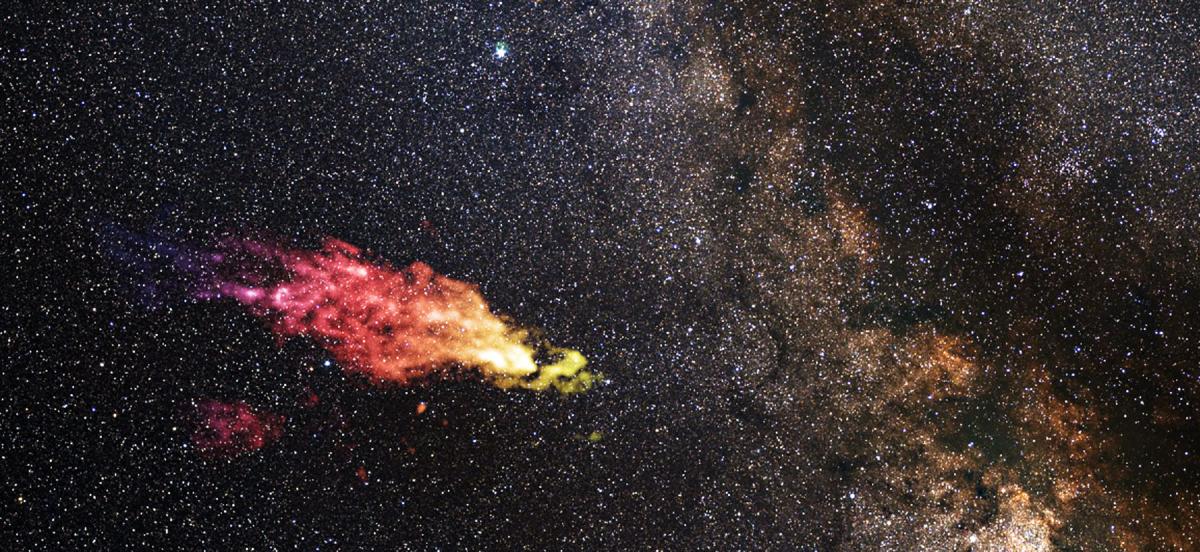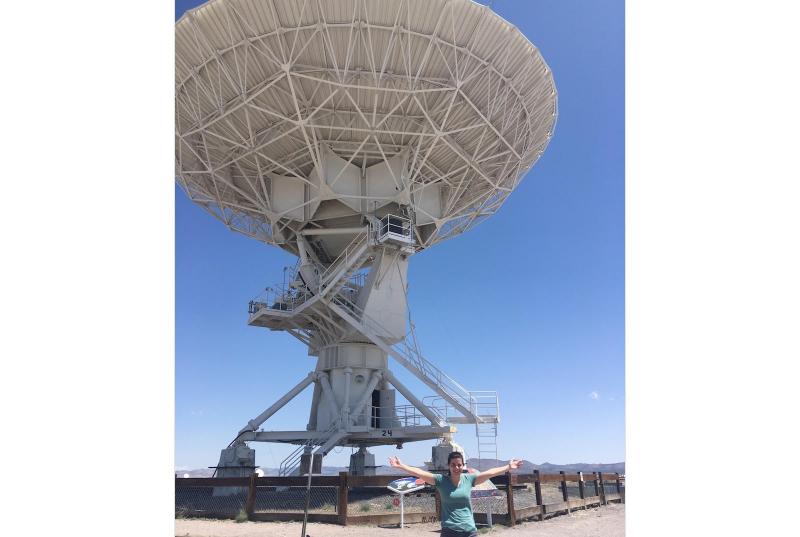Sarah Betti ’17 Published in The Astrophysical Journal

Thee Smith Cloud. Photo by Saxton/Lockman/NRAO/AUI/NSF/Mellinger
Details
The former astrophysics major, now pursuing a Ph.D. in astronomy, has turned her undergraduate thesis research into a published article.
Starting in her junior year at Haverford, Sarah Betti ’17 began cloud watching. Not the fluffy white kinds or rainy gray kinds, though. The particular cloud of interest to Betti is called the Smith Cloud, a moving conglomerate of hydrogen gas beyond the outer reaches of the Milky Way. Her research on the cloud started as an independent study at Haverford, and then turned into her senior thesis. Now a Ph.D. student at the University of Massachusetts, Amherst, Betti has built on her undergraduate work for a publication in The Astrophysical Journal.
“The main science question I am probing is, ‘How has the Smith Cloud remained together throughout its journey?’” said Betti, who graduated with a degree in astrophysics and is in her second year of her astronomy Ph.D. program. “A magnetic field that surrounds and encloses the cloud could stop the gas from being stripped away. My paper studies whether we can measure a magnetic field, if it is strong enough to keep the cloud together, and what it looks like.”
In “Constraining the Magnetic Field of the Smith High Velocity Cloud using Faraday rotation,” Betti explains how the Smith Cloud remained intact after traveling through the Milky Way galaxy about 70 million years ago by identifying a magnetic field around the cloud. To do this, she used data from the Very Large Array (VLA), a radio telescope in New Mexico, and calculated a magnetic field with a strength of just 5 microGauss. A common refrigerator magnet has a magnetic field of 50 Gauss, which is 10 million times larger than the field surrounding the cloud. Her paper suggests that this was enough to keep the vagrant cloud together.
“Many of these gas clouds are falling into the Milky Way, potentially providing material for future star formation and driving the evolution of our galaxy,” said Betti. However, depending on how far these clouds have traveled, they could and should be stripped apart before they could even help form new stars. Therefore, studying how they remain intact gives information into how and why we still see these clouds and provides a link between our understanding of how clouds form and how they help provide material for star formation. By studying these clouds, we can help understand how our galaxy has evolved into the way it is today.”

Betti’s senior thesis on the topic was advised by Alex Hill, then a postdoctoral researcher at Haverford who is now an astronomer at the University of British Columbia. Hill explained that at the beginning of her junior year, Sarah had already gained valuable skills from conducting research at the Green Bank Observatory in West Virginia. When he provided her with data from the VLA, she was able to process it with proficiency.
“Sarah is a joy to work with,” said Hill. “She started with great technical skills, which made getting started really easy from my point of view. She is independent and motivated while also willing and able to ask good questions, a skill that I certainly lack. The data set I gave her was large and challenging to work with, and she both got the data reduced and went to the scientific interpretation and writing of the paper.”
Betti is proud that her research, many years in the making, will now be circulated among many readers in her field. Recently, news of her work was also featured in AAS Nova, a website featuring highlights from the American Astronomical Society’s collection of journals.
“I feel a sense of accomplishment that the work I did for my independent study and my senior thesis is now officially published in The Astrophysical Journal,” said Betti.



